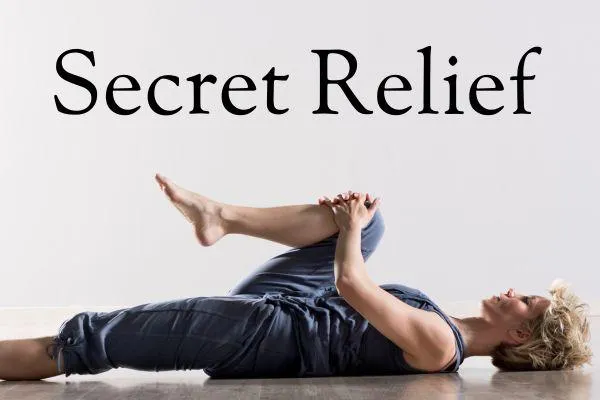Blog
(I no longer post on this blog. Please visit my Substack site for future posts, thank you)

Somatic Movement: The Missing Piece in Stress Relief for Women
Stress isn’t just in the mind; it’s stored in the body
Somatic movement has become pretty popular recently. But still most stress-relief methods only focus on thought-based solutions.
We try and manage stress with time-blocking, delegation, wine o’clock or over-relying on taking time off. But let’s be real - none of these are sustainable. And not everyone can sell everything and move to the jungle in Costa Rica like I did!
In today’s world of information overload and constant demand, it’s no wonder so many women feel frazzled, pulled in a million directions and unable to truly relax.
This is why chronic stress is the new normal - tight bodies, racing minds and nervous systems stuck in high alert mode.
Sound familiar?
You may have tried meditation, breath-work or even therapy, only to find them frustrating, difficult, or (dare I say) boring?
There’s a reason for that.
The body needs more than just mindset shifts to release stress - it needs physical movement. But not just any movement - it needs somatic movement.
What is Somatic Movement?
Somatic movement is a body-based practice that helps release stored stress and tension. Unlike a workout or traditional yoga, it’s not about stretching further, building strength or pushing your limits.
Instead, it’s about slow, intentional movements that retrain the nervous system to feel safe again.
Think of it as an exploration of body awareness through mindful movement.
Why does this matter? Because stress isn’t just something you "feel" - it gets locked in the muscles, fascia, and nervous system.
Ever noticed tight shoulders, jaw clenching or that pit in your stomach when overwhelmed? That’s stress, living in your body long after the stressful moment has passed.
Somatic movement helps by:
✔ Releasing muscle tension locked in the body
✔ Activating the parasympathetic nervous system (your body’s natural relaxation mode)
✔ Retraining the brain and body to stop defaulting to stress

The original Downward Facing Dog - Adho Mukha Svanasana
Even animals use somatic movement. You're probably familiar with the yoga poses upward facing dog and downward facing dog? They mimic a move many animals do upon waking or after being sedentary. It's known as pandiculation: muscle contraction followed by a gradual release and relaxation. It's the body’s natural way of releasing tension, resetting the nervous system and preventing stiffness
How I Discovered Somatic Movement
When I was experiencing stress through my job as a police officer, I tried ways to ‘let off steam’. I practiced yoga and long distance running. Nothing better than pounding through the streets, breathing in fresh air and listening to your favourite songs on your iPod shuffle!
Sounds healthy, right?
Except… it wasn’t.
I was still stressed. Those yoga classes and running 6 days a week were just feeding into what was my default status: fight or flight mode. Because, I wasn’t doing the laying on your back yoga in a church hall type of class, I was doing high intensity dynamic classes to build a sweat and work my body. There was no stress release going on: there was just more stress creation.
It wasn’t until I completed my Yoga for Stress, Burnout and Fatigue teacher training that I finally got it.
By that point, I had already sold everything and moved to Costa Rica.
It was the biggest penny drop moment of my life.
From that day forward, I started viewing everything through the lens of the nervous system. And here’s the truth:
Stress itself isn’t bad - what’s harmful is when it stays trapped in the body with no release.
That’s why somatic movement changed everything.
3 Powerful Benefits of Somatic Movement for Stressed Women
1. Releases Stress Stored in the Body
Tension builds up in key areas - hips, shoulders, jaw, and neck. Somatic movement gently unwinds these tension points, allowing the body to fully relax.
Try This: A slow, controlled hip release exercise can help unlock deep-seated stress (this is why hip openers in yoga can feel so emotional!)
2. Helps Break the Stress Cycle
Ever feel like stress is running the show - even when there’s no reason to be anxious? That’s because the nervous system can get stuck in high alert mode.
Somatic movement re-programmes the body to shift out of survival mode and into a state of ease.
Try This: A simple pendulation exercise (alternating between tension and ease) can teach the body how to let go of stress rather than holding onto it.
3. Creates Instant Calm Without Overwhelm
Many women struggling with stress find it impossible to sit still and meditate, because the body is too wired to rest.
Somatic movement is an active way to relax, making it much easier for restless minds to drop into a state of calm.
Try This: A 10-minute guided somatic practice using breath + movement can quickly bring the nervous system into balance.
Start Small: A Simple Practice to Try Today
If stress has been sitting in your body for a while, even a few minutes of gentle movement can make a difference.
Try this Cosmic Cat practice - a simple but powerful way to release tension and shift out of stress mode.
Ready to Release Stress? Here’s Your Next Step
Somatic movement isn’t about doing more - it’s about teaching the body to feel safe again.
That’s why I've created for you a special 10-Minute Somatic Hip Release Class designed to:
✔ Unwind tension stored in the body
✔ Calm the nervous system through movement & breath
✔ Help you feel lighter, calmer, and more in control
It also comes with a 2 Minute Stress Test to help pinpoint exactly where stress is showing up in your body.
Because sometimes, stress becomes so normal that we don’t even realise it’s running the show.
Once you recognise it - you can release it.
Click Here To Get Your FREE 2 Minute Stress Test + Somatic Release Practice For The Hips
Stress doesn’t have to stay stuck. Start feeling lighter, calmer, and more in control - one small movement at a time.
To go deeper, check out my Stress Rescue Kit by clicking the image below. It's your practical no-fluff kit designed to help you reduce stress and recharge in just one week. With 7 guided audio practices and a 38-page plan filled with actionable strategies, you'll discover how to create calm and balance without feeling overwhelmed. Transform your stress into clarity and control - starting with just 20 minutes a day.

© Helen Bee Coaching & Strategy 2025 - All Rights Reserved - Terms & Conditions - Privacy Policy
